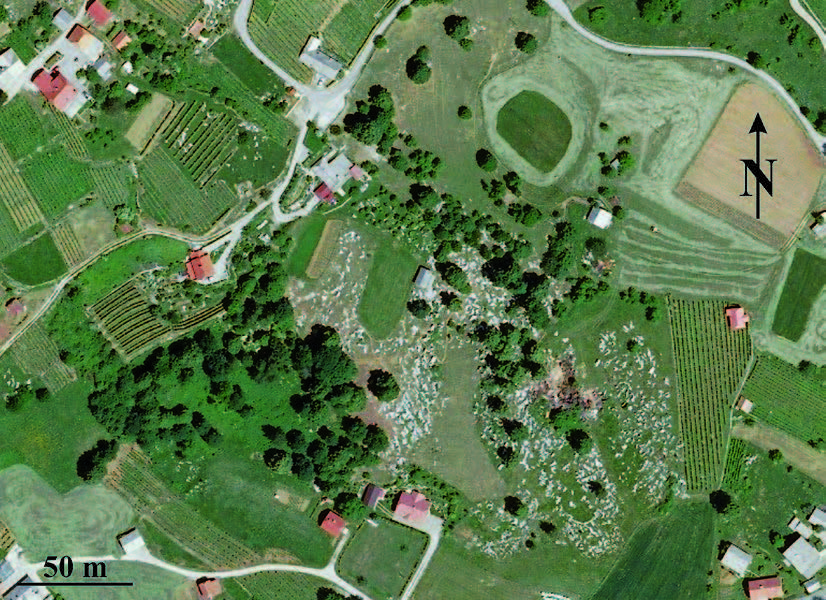Development of slope and related subsoil karst: A case study from Bela Krajina, SE Slovenia
DOI:
https://doi.org/10.3986/ac.v40i2.17Povzetek
The relief of Bela Krajina and Semiška Reber in southeastern Slovenia is mainly a consequence of post Late Miocene tectonic movements and karstic, mostly subsoil, erosion. In the lower half of the slope at Vrtača in the northwestern part of Bela Krajina, 1.3 km northeast of the center of Semič and 15 to 25 meters above the surroundings, a 250-meter long and about 150-meter wide lateral ridge rises at an inclination of 8°. The formation of the medium-sized relief between the elevated lateral ridge and the lower elongated side depressions is most probably to a large extent the consequence of differences in the rock fissuring and the varying intensity of hundreds of thousands of years lasting corrosion related to it. Traces of subsoil formation are the prevailing feature found on hundreds of rock ribs (i.e., subsoil rock formations that are not cone-shaped like teeth but rather elongated with their longer axes largely parallel to the dip of the surface) dissecting the surface area of one of the vineyard plots on the rocky lateral ridge. This indicates they were relatively recently exposed, as a consequence of human activity when soil was removed from an abandoned plot.
Prenosi

Prenosi
Objavljeno
Kako citirati
Številka
Rubrike
Licenca
Avtorji jamčijo, da je delo njihova avtorska stvaritev, da v njem niso kršene avtorske pravice tretjih oseb ali kake druge pravice. V primeru zahtevkov tretjih oseb se avtorji zavezujejo, da bodo varovali interese založnika ter da bodo povrnili morebitno škodo.
Podrobneje v rubriki: Prispevki




